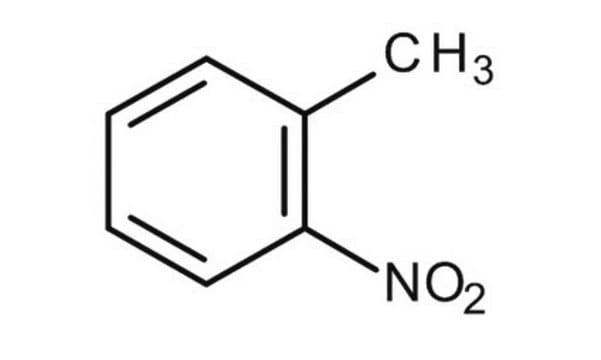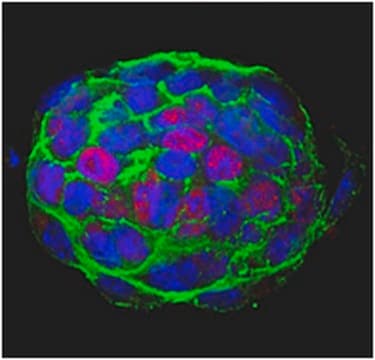N27314
3-Nitrotoluene
99%
Synonim(y):
1-Methyl-3-nitrobenzene
About This Item
Polecane produkty
gęstość pary
4.73 (vs air)
ciśnienie pary
1 mmHg ( 50.2 °C)
Próba
99%
Postać
liquid
współczynnik refrakcji
n20/D 1.541 (lit.)
tw
230-231 °C (lit.)
mp
14-16 °C (lit.)
gęstość
1.157 g/mL at 25 °C (lit.)
ciąg SMILES
Cc1cccc(c1)[N+]([O-])=O
InChI
1S/C7H7NO2/c1-6-3-2-4-7(5-6)8(9)10/h2-5H,1H3
Klucz InChI
QZYHIOPPLUPUJF-UHFFFAOYSA-N
Szukasz podobnych produktów? Odwiedź Przewodnik dotyczący porównywania produktów
Powiązane kategorie
Hasło ostrzegawcze
Warning
Zwroty wskazujące rodzaj zagrożenia
Zwroty wskazujące środki ostrożności
Klasyfikacja zagrożeń
Acute Tox. 4 Oral - Aquatic Chronic 2 - STOT RE 2
Kod klasy składowania
6.1A - Combustible acute toxic Cat. 1 and 2 / very toxic hazardous materials
Klasa zagrożenia wodnego (WGK)
WGK 3
Temperatura zapłonu (°F)
208.4 °F
Temperatura zapłonu (°C)
98 °C
Środki ochrony indywidualnej
Eyeshields, Faceshields, Gloves, type ABEK (EN14387) respirator filter
Certyfikaty analizy (CoA)
Poszukaj Certyfikaty analizy (CoA), wpisując numer partii/serii produktów. Numery serii i partii można znaleźć na etykiecie produktu po słowach „seria” lub „partia”.
Masz już ten produkt?
Dokumenty związane z niedawno zakupionymi produktami zostały zamieszczone w Bibliotece dokumentów.
Klienci oglądali również te produkty
Nasz zespół naukowców ma doświadczenie we wszystkich obszarach badań, w tym w naukach przyrodniczych, materiałoznawstwie, syntezie chemicznej, chromatografii, analityce i wielu innych dziedzinach.
Skontaktuj się z zespołem ds. pomocy technicznej














